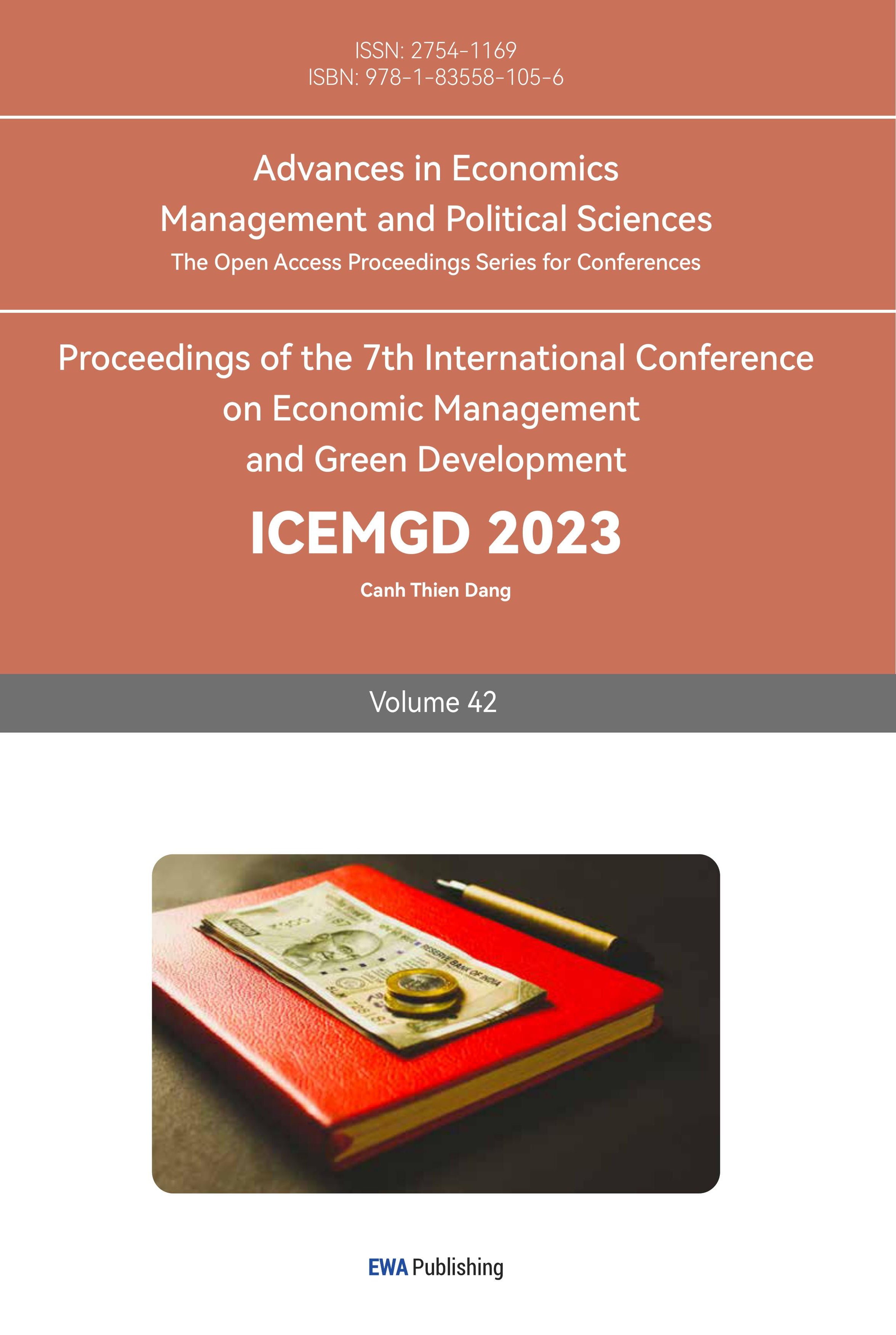References
[1]. S Grimes, D Du, (2022), China’s emerging role in the global semiconductor value chain, Telecommunications Policy,101959.
[2]. X Gu, W Zhang, S Cheng, (2021), How do investors in Chinese stock market react to external uncertainty? An event study to the Sino-US disputes, Pacific-Basin Finance Journal,101614.
[3]. L Jiang, Y Lu, H Song, G Zhang, (2023), Responses of exporters to trade protectionism: Inferences from the US-China trade war, Journal of International Economics,103687
[4]. T J. Shattuck, (2021), Stuck in the Middle: Taiwan's Semiconductor Industry, the U.S.-China Tech Fight, and Cross-Strait Stability, Orbis, Pages 101-117
[5]. Y Chen, S Zhang, J Miao. (2023) The negative effects of the US-China trade war on innovation: Evidence from the Chinese ICT industry, Technovation,102734
[6]. Y Zhang, (2018). The US–China Trade War: A Political and Economic Analysis. Indian Journal of Asian Affairs, 31(1/2), 53–74. https://www.jstor.org/stable/26608823
[7]. Y Zhang, X Zhu, (2023), Analysis of the global trade network of the chip industry chain: Does the U.S.-China tech war matter? Heliyon, e17092
[8]. X Zhou, Y Gao, P Wang, B Zhu, (2022), Examining the overconfidence and overreaction in China’s carbon markets, Economic Analysis and Policy, Pages 472-489
[9]. S Parveen, Z W Satti, Q A Subhan, S Jamil, (2020), Exploring market overreaction, investors’ sentiments and investment decisions in an emerging stock market,Borsa Istanbul Review, Pages 224-235
[10]. O Borgards, R L. Czudaj, (2020). The prevalence of price overreactions in the cryptocurrency market, Journal of International Financial Markets, Institutions and Money,101194
Cite this article
Lei,X. (2023). The Comprehensive Effect of the US-China Trade War on the Chinese Chip Industry: A Dynamic Perspective Based on Return. Advances in Economics, Management and Political Sciences,42,110-115.
Data availability
The datasets used and/or analyzed during the current study will be available from the authors upon reasonable request.
Disclaimer/Publisher's Note
The statements, opinions and data contained in all publications are solely those of the individual author(s) and contributor(s) and not of EWA Publishing and/or the editor(s). EWA Publishing and/or the editor(s) disclaim responsibility for any injury to people or property resulting from any ideas, methods, instructions or products referred to in the content.
About volume
Volume title: Proceedings of the 7th International Conference on Economic Management and Green Development
© 2024 by the author(s). Licensee EWA Publishing, Oxford, UK. This article is an open access article distributed under the terms and
conditions of the Creative Commons Attribution (CC BY) license. Authors who
publish this series agree to the following terms:
1. Authors retain copyright and grant the series right of first publication with the work simultaneously licensed under a Creative Commons
Attribution License that allows others to share the work with an acknowledgment of the work's authorship and initial publication in this
series.
2. Authors are able to enter into separate, additional contractual arrangements for the non-exclusive distribution of the series's published
version of the work (e.g., post it to an institutional repository or publish it in a book), with an acknowledgment of its initial
publication in this series.
3. Authors are permitted and encouraged to post their work online (e.g., in institutional repositories or on their website) prior to and
during the submission process, as it can lead to productive exchanges, as well as earlier and greater citation of published work (See
Open access policy for details).
References
[1]. S Grimes, D Du, (2022), China’s emerging role in the global semiconductor value chain, Telecommunications Policy,101959.
[2]. X Gu, W Zhang, S Cheng, (2021), How do investors in Chinese stock market react to external uncertainty? An event study to the Sino-US disputes, Pacific-Basin Finance Journal,101614.
[3]. L Jiang, Y Lu, H Song, G Zhang, (2023), Responses of exporters to trade protectionism: Inferences from the US-China trade war, Journal of International Economics,103687
[4]. T J. Shattuck, (2021), Stuck in the Middle: Taiwan's Semiconductor Industry, the U.S.-China Tech Fight, and Cross-Strait Stability, Orbis, Pages 101-117
[5]. Y Chen, S Zhang, J Miao. (2023) The negative effects of the US-China trade war on innovation: Evidence from the Chinese ICT industry, Technovation,102734
[6]. Y Zhang, (2018). The US–China Trade War: A Political and Economic Analysis. Indian Journal of Asian Affairs, 31(1/2), 53–74. https://www.jstor.org/stable/26608823
[7]. Y Zhang, X Zhu, (2023), Analysis of the global trade network of the chip industry chain: Does the U.S.-China tech war matter? Heliyon, e17092
[8]. X Zhou, Y Gao, P Wang, B Zhu, (2022), Examining the overconfidence and overreaction in China’s carbon markets, Economic Analysis and Policy, Pages 472-489
[9]. S Parveen, Z W Satti, Q A Subhan, S Jamil, (2020), Exploring market overreaction, investors’ sentiments and investment decisions in an emerging stock market,Borsa Istanbul Review, Pages 224-235
[10]. O Borgards, R L. Czudaj, (2020). The prevalence of price overreactions in the cryptocurrency market, Journal of International Financial Markets, Institutions and Money,101194









